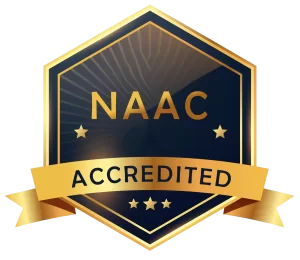POINT OF VIEW
Plagiarism
Paul George
Consultant Oral and Maxillofacial Surgeon
Former President, AOMSI
Received: 1-07-2022
Revised: 8-07-2022
Accepted: 22-07-2022
Address for correspondence: Dr George Paul, Paulose Dental Clinic, Salem Tamil Nadu. Email – maxfaxgp@gmail.com
This is an open access journal, and articles are distributed under the terms of the Creative Commons Attribution-Noncommercial ShareAlike 4.0 license, which allows others to remix, tweak, and build upon the work non-commercially, as long as appropriate credit is given and the new creations are licensed under the identical terms
How to cite this article: Paul G. Plagiarism. J Oral Biomed Sci 2022; 1: 60-1
Plagiarism
Plagiarism is all about honesty in academic conduct. By using the work of another person and appropriating credit for it, is the reflection of poor morals. This phenomena is particularly rampant in medical journals.
Plagiarism may range from ad verbatim transcription of another source to subtle copying of an idea without actually using the same words. Based on these premises the Dean’s office of Bowdion college classifies them under 4 headings
- Direct Plagiarism- outright use of another’s words or ideas without quoting the original.
- Self Plagiarism- using one’s own work in different settings
- Mosaic Plagiarism- It involves slight variations of language to convey the same ideas as one’ own. Sometimes called “patch writing,” this kind of paraphrasing, whether intentional or not, is academically dishonest.
- Accidental Plagiarism- copying without intent or forgetting to attribute source.
All of them are considered serious academic violations and subject to sanctions by Bowdion College (1).
Historically, copying another person’s work or ideas was considered merely as a moral transgression. While it was frowned upon, there really did not exist serious consequences.
Even today Plagiarism is not a legally sanctionable crime or even a civil wrong in the statute books of most countries. It is of particular interest that Plagiarism has been treated quite seriously in India and is often clubbed with copyright infringement, particularly if contents are plagiarised from a copyrighted book without permission. For example, in 2012 in India, former Delhi University vice-chancellor Deepak Pental was put in jail over allegations that he plagiarised a colleague’s research.(2) Today, universities, colleges, publication houses and other institutions look at plagiarism as academic thefts and are punished according to their own rules. While it may not go to court, those indulging in the use of unauthorized works of others are likely to be denied promotions, being blacklisted etc.
How is plagiarism detected?
In the non digital era plagiarism could only be detected by the due diligence of editors or based on the complaints of the original authors. Today, there are several tools that can detect plagiarism by ‘more sophisticated computer methods that analyze lexical, syntactic, and semantic features, tracking of paraphrasing, citation based detection, analyzing the graphics, cross language text borrowing by non-English speakers and copying of references …’(3)
How can Plagiarism be avoided?
I am paraphrasing from an article by Kumar and Priya (4) from India which advices, amongst other things, that one should
‘Take enough time when writing articles to avoid having to rush through a manuscript without forming a clear idea. They must, as far as possible, use their own words and thereby avoid ‘copy and paste’ strategies that are becoming standard use these days. It is important to cite and acknowledge sources even while using one’s own words. Plagiarism includes self- plagiarism, particularly when other authors or teachers/ students/ colleagues are involved. It is important to remember that publishers have copyrights to books and articles and copying without permission or citation can lead to legal issues.’
It is useful to remember that most publications use plagiarism detection softwares that allow for some unintentional similarities but can effectively detect direct and even ‘patchwork’ plagiarism.
Conclusion:
Plagiarism can bring permanent stigma to those pursuing serious academia. The shadow of intellectual theft can remain a permanent impediment for advancement in teaching careers in addition to it being a professional black mark.
References:
- https://www.bowdoin.edu/dean-of-students/conduct-review-board/academic-honesty-and-plagiarism/common-types-of-plagiarism.html
- Is Plagiarism Illegal, www.plagiarism.org. October 27, 2017. Retrieved 2019-10-15.
- Roka YB, Nepal Journal of Neuroscience 14:2-6, 2017
- Kumar PM, Priya NS, Musalaiah S, Nagasree M. Knowing and avoiding plagiarism during scientific writing. Ann Med Health Sci Res. 2014;4(Suppl 3):S193-S198. doi:10.4103/2141-9248.141957

